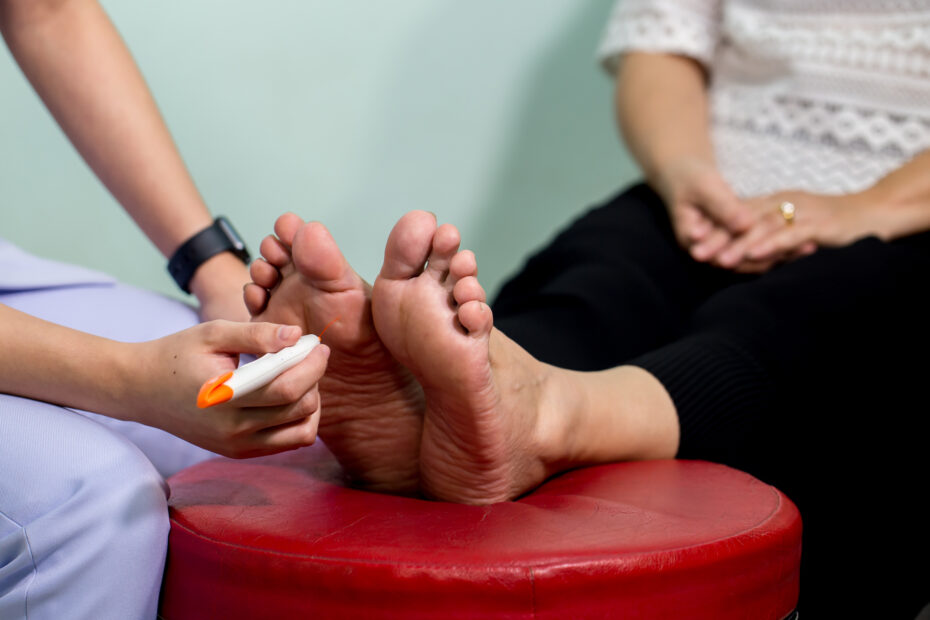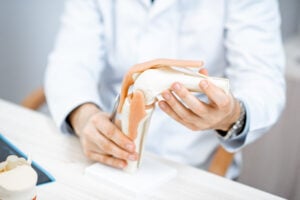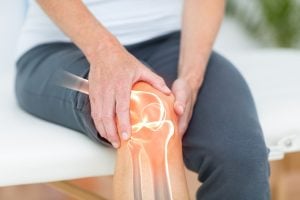It’s not uncommon for individuals with diabetes to lose sensation in their feet. This numbness can prove dangerous if they suffer a cut or ulcer. If the wound remains untreated, an infection can set in.
Such an infection can spread quickly because people living with diabetes often have poor blood circulation to the feet. Poor blood flow makes it difficult for an infection to heal. This can result in peripheral artery disease (PAD) where the arteries become narrowed or blocked completely. Sometimes, the infection can get so bad that the foot or leg requires amputation.
One in six people living with diabetes develops foot problems. Those who have nerve damage (diabetic neuropathy) or poor blood flow in their feet are most at risk. People with diabetes with regular episodes of hyperglycemia or high blood sugar are also more at risk.
Diabetic foot statistics and its incidence around the globe
People living with long-term diabetes are especially prone to foot ulcers. Recent research shows that global diabetic foot ulcer prevalence is around 6.3 per cent. It is higher in males (4.5 per cent) than in females (3.5 per cent). It is also higher in type 2 diabetes (6.4 per cent) than in insulin-dependent type 1 cases (5.5 per cent).
In terms of global differences, diabetic patients in the Middle East have a higher than average prevalence of diabetes. A UAE-based study in 2019 by the International Diabetes Federation (IDF) reported the prevalence of diabetes to be 16.3%, compared to 9.3% worldwide. The situation is similar in Saudi Arabia, Kuwait and Qatar and is expected to worsen over the next decade.
In the rest of the world, North America has a high prevalence of diabetic foot disease (13 per cent) compared to Oceania, the lowest, with just three per cent. Africa follows at 7.2 per cent, while in Europe, the number of diabetic patients with foot ulcers is 5.1 per cent, and in Asia, it is 5.5 per cent.
The researchers also found that patients with these foot problems tended to be older. They had been diagnosed with diabetes for longer and tended to be smokers or ex-smokers. Many suffered from diabetic retinopathy, damage to the back of the eye caused by high blood sugar levels, which can lead to blindness.
Signs and symptoms of diabetic feet
An individual with diabetes-related neuropathy in the feet may display numbness, tingling, pain, poor sensitivity to heat and cold, or darkened skin.
Foot ulcers in a person with diabetes need urgent attention if the feet begin the blister or there is a discharge or pus. Other symptoms are foot pain, a bad odour, and the feet turning red or swelling.
The UK diabetes society outlines 14 signs of a serious foot problem, which should trigger an immediate consultation with your GP.
Reducing the risk of foot infection
Individuals with diabetes must pay particular attention to their feet to make sure there are no cuts or blisters, which can become infected. Washing feet regularly in warm water and drying them thoroughly helps. Sprinkling talcum powder between the toes afterwards prevents moisture from building up there. Regularly cutting toenails ensures there is less likelihood of a cut developing with an ingrown toenail.
When sitting, a person with diabetes should put their feet up on a stool or similar. Moving the feet by wriggling the toes helps the circulation. Exercises which do not put too much pressure on the feet, such as swimming, also help. Shoes should always fit well and not be so tight as to put pressure on parts of the foot.
Smoking interferes with circulation, so it can make foot problems worse. Walking around the house barefoot is also not recommended since it can lead to cuts and blisters.
Diabetic foot disease – is it curable?
The earlier a foot infection is spotted, the better chance it clears up. In some cases, the infected tissue can be cut away. Special bandages and ointment can then to applied to the wound to help the foot heal itself. Antibiotics can also help with ridding the body of infection. Sometimes the individual is placed in a wheelchair so that no weight is put on the ulcerated foot.
At Medical Travel Market, we work with world-leading orthopaedic, trauma and vascular surgeons, who are experts in foot, ankle and limb reconstruction. Our clinical partners are based at the best hospitals in London and South Korea, and they treat all conditions of the foot and ankle, as well as limb deformity and bone infection. Get in touch below for a free consultation.
Medical Travel Market (MTM Global) is a UK based international healthcare consultancy promoting high-quality healthcare worldwide.
For corporate and press inquiries, click here.
For individual treatment inquiries, explore our network of international healthcare providers, or send your request to our medical travel concierge team on bookings@medicaltravelmarket.com















